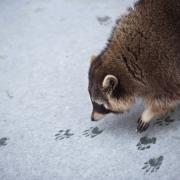
Tips for Tracks
Tracking wildlife in winter is like reading a compelling new novel. As animals travel across blank pages of fresh white snow their tracks become words, authoring new chapters every day in the memoir of their elusive lives.
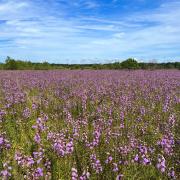
One Million Purple Plants
Late summer pours a tide of purple flowers across the sandplain grassland of Kennebunk Plains Wildlife Management Area.
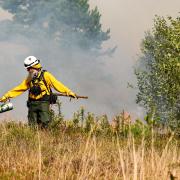
Fired Up about Conservation
The first Prescribed Fire Training Exchange (TREX) to be held in the Northeast brought collaboration, mentorship, outreach, and fire to the sandplain grassland of Kennebunk Plains Wildlife Management Area. Prescribed burns are tactically designed with two main objectives: restore ecosystem function and decrease uncontrollable wildfire risk.
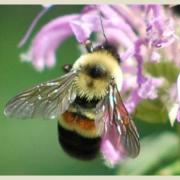
BEE on the Lookout for the Rusty Patched Bumble Bee
Maine Department of Inland Fisheries and Wildlife is looking for the federally Endangered Rusty Patched Bumble Bee and we need more eyes!
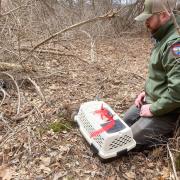
New England Cottontails have returned to Scarborough Marsh Wildlife Management Area!
MDIFW’s restoration efforts for the New England cottontail rabbits (a State Endangered species) is a multi-faceted approach.

Maine River Trips
Paddling along Maine’s many water ways is a favorite pastime for anglers and anyone who enjoys the serenity of being on the water, turning around bends only to share the river with wildlife and the splash of a rising fish. Here are a few trip ideas throughout the state, with varying lengths and difficulty levels. Before you go, always do you research and plan ahead. You may need to consult a gazetteer and other resources before making the trip. And always tell someone where you are going, and when you plan to return.
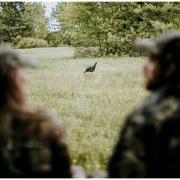
Understanding Spring Turkey Behavior + Scouting Tips
Spring turkey hunting is an excellent way to celebrate the end of winter. It’s a fun, interactive hunt, providing plenty of opportunity across the state. On March 24, the Department hosted a live panel discussion with three MDIFW staff members and avid turkey hunters: Turkey + Other Game Bird Biologist Kelsey Sullivan, Fisheries Resource Supervisor Liz Thorndike, and retired Rec Safety Coordinator Reggie Read.
Racing to Save Maine’s Black Racers
His leap was like something from a football playback, but instead of cradling a pigskin, he was lunging toward a flash of black rocketing through the tall grass, living up to its name, the black racer. I never expected catching snakes would require such agility, speed, and coordination. I used to catch snakes as a child, usually for my mom or step-mom who would burst out in a screech while gardening, yelling for me to remove it. I would gladly oblige, taking the time to check over the snake and bring it into the woods to be released. But I never had the speed nor the commitment to bound through the air, landing on my side, surely losing my breath after falling to the hard ground.
Managing for New England Cottontail in State Parks
By Wildlife Biologist Sarah Spencer
If you’re a regular reader of the MDIFW Blog, then you’re already familiar with the New England cottontail. If you’ve joined us more recently, welcome! Here’s a quick recap on some of the New England cottontail-themed blogs we’ve shared with you to date:
Keep In Touch!
Enter your email or mobile number to receive the latest news from MDIFW.